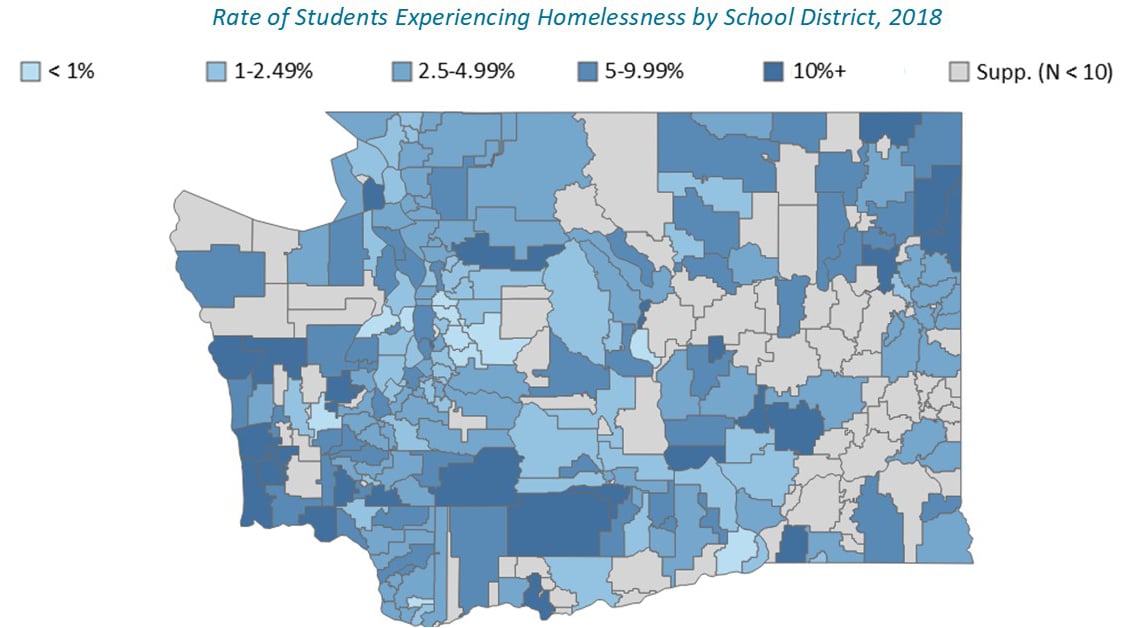Student homelessness is not a geographic-specific issue; it is a statewide issue that affects all communities.
Cities have the highest number of students experiencing homelessness, but the rate of student homelessness is greater in rural areas than any other geographic location type in the state of Washington, according to our most recent K-12 student data report. On a per-capita basis, 4.8% of students in rural school districts are experiencing homelessness, compared to 4.1% for city districts and 2.6% for suburban districts.
Our report also shows that unsheltered homelessness is the fastest growing nighttime residence category for students experiencing homelessness. In the past three years, the rate of students living unsheltered has increased in every grade and in every type of geographic location. Last year, 13% of students experiencing homelessness in rural areas were unsheltered compared to 5% of students living unsheltered in cities.
“We don’t have a shelter for homeless youth. We have a shelter for 18 to 24-year-olds and that’s about 30 miles from here. Otherwise, we just don’t have any options for unaccompanied youth under 18,” said Mary Michell, South Whidbey School District’s McKinney-Vento liaison, who gave an example of the limited resources youth are faced with to meet their basic needs in rural communities such as hers. In her school district, 105 students were identified as homeless in the 2017 to 2018 academic year alone.

McKinney-Vento liaisons support students experiencing homelessness and serve as a bridge between them and school staff and administrators. In rural areas, limited resources, lack of housing, minimal transportation services, and the lack of proximity to other resources in nearby communities contribute to the high rate of student homelessness. It can be a challenge to serve students and families effectively with a limited network of support.
To connect homeless liaisons and housing providers statewide, we created the School/Housing Network, a web-based, peer-to-peer learning group that meets online every month. We saw a need for homeless liaisons and housing providers to build connections, share strategies, and support each other to better serve students and families experiencing homelessness in communities statewide.
As the homeless liaison, you’re the only one. You’re the only person doing this job for the school district that you work for. Having the School-Housing Network, connecting with other homeless liaisons to see how they’re doing their job inspires you to do your job better and it gives you ideas.
— Mary Michell, South Whidbey School District
Coming up with solutions to support students experiencing homelessness requires cross-system collaboration, relying on lived and professional expertise from a variety of sources. Building Changes is excited to tap into our vast network of connections throughout the state, including the School/Housing Network, to build a menu of strategies for our Schoolhouse Washington project. We are developing targeted strategies that school staff and district administrators can use to advance solutions in youth and family homelessness. We hope that the menu of strategies will be a tool schools can use to strengthen their work in reaching even more students and families experiencing homelessness in their communities.
LEARN MORE:
- Contact Samie Iverson at Building Changes to learn more about our School/Housing Network.

